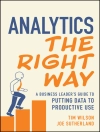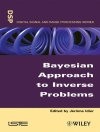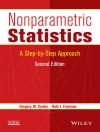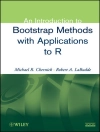Text Mining: Applications and Theory presents the
state-of-the-art algorithms for text mining from both the academic
and industrial perspectives. The contributors span several
countries and scientific domains: universities, industrial
corporations, and government laboratories, and demonstrate the use
of techniques from machine learning, knowledge discovery, natural
language processing and information retrieval to design
computational models for automated text analysis and mining.
This volume demonstrates how advancements in the fields of
applied mathematics, computer science, machine learning, and
natural language processing can collectively capture, classify, and
interpret words and their contexts. As suggested in the
preface, text mining is needed when ‘words are not
enough.’
This book:
* Provides state-of-the-art algorithms and techniques for
critical tasks in text mining applications, such as clustering,
classification, anomaly and trend detection, and stream
analysis.
* Presents a survey of text visualization techniques and looks at
the multilingual text classification problem.
* Discusses the issue of cybercrime associated with
chatrooms.
* Features advances in visual analytics and machine learning
along with illustrative examples.
* Is accompanied by a supporting website featuring datasets.
Applied mathematicians, statisticians, practitioners and
students in computer science, bioinformatics and engineering will
find this book extremely useful.
Inhoudsopgave
List of Contributors.
Preface.
PART I TEXT EXTRACTION, CLASSIFICATION, AND
CLUSTERING.
1 Automatic keyword extraction from individual
documents.
1.1 Introduction.
1.2 Rapid automatic keyword extraction.
1.3 Benchmark evaluation.
1.4 Stoplist generation.
1.5 Evaluation on news articles.
1.6 Summary.
1.7 Acknowledgements.
2 Algebraic techniques for multilingual document
clustering.
2.1 Introduction.
2.2 Background.
2.3 Experimental setup.
2.4 Multilingual LSA.
2.5 Tucker1 method.
2.6 PARAFAC2 method.
2.7 LSA with term alignments.
2.8 Latent morpho-semantic analysis (LMSA).
2.9 LMSA with term alignments.
2.10 Discussion of results and techniques.
2.11 Acknowledgements.
3 Content-based spam email classification using
machine-learning algorithms.
3.1 Introduction.
3.2 Machine-learning algorithms.
3.3 Data preprocessing.
3.4 Evaluation of email classification.
3.5 Experiments.
3.6 Characteristics of classifiers.
3.7 Concluding remarks.
3.8 Acknowledgements.
4 Utilizing nonnegative matrix factorization for email
classification problems.
4.1 Introduction.
4.2 Background.
4.3 NMF initialization based on feature ranking.
4.4 NMF-based classification methods.
4.5 Conclusions.
4.6 Acknowledgements.
5 Constrained clustering with k-means type
algorithms.
5.1 Introduction.
5.2 Notations and classical k-means.
5.3 Constrained k-means with Bregman divergences.
5.4 Constrained smoka type clustering.
5.5 Constrained spherical k-means.
5.6 Numerical experiments.
5.7 Conclusion.
PART II ANOMALY AND TREND DETECTION.
6 Survey of text visualization techniques.
6.1 Visualization in text analysis.
6.2 Tag clouds.
6.3 Authorship and change tracking.
6.4 Data exploration and the search for novel patterns.
6.5 Sentiment tracking.
6.6 Visual analytics and Future Lens.
6.7 Scenario discovery.
6.8 Earlier prototype.
6.9 Features of Future Lens.
6.10 Scenario discovery example: bioterrorism.
6.11 Scenario discovery example: drug trafficking.
6.12 Future work.
7 Adaptive threshold setting for novelty mining.
7.1 Introduction.
7.2 Adaptive threshold setting in novelty mining.
7.3 Experimental study.
7.4 Conclusion.
8 Text mining and cybercrime.
8.1 Introduction.
8.2 Current research in Internet predation and
cyberbullying.
8.3 Commercial software for monitoring chat.
8.4 Conclusions and future directions.
8.5 Acknowledgements.
PART III TEXT STREAMS.
9 Events and trends in text streams.
9.1 Introduction.
9.2 Text streams.
9.3 Feature extraction and data reduction.
9.4 Event detection.
9.5 Trend detection.
9.6 Event and trend descriptions.
9.7 Discussion.
9.8 Summary.
9.9 Acknowledgements.
10 Embedding semantics in LDA topic models.
10.1 Introduction.
10.2 Background.
10.3 Latent Dirichlet allocation.
10.4 Embedding external semantics from Wikipedia.
10.5 Data-driven semantic embedding.
10.6 Related work.
10.7 Conclusion and future work.
References.
Index.
Over de auteur
Michael W. Berry, Professor and Associate Department Head, Department of Electrical Engineering and Computer Science, University of Tennessee.
Michael is on the Editorial board of Computing in Science and Engineering and Statistical Analysis and Data Mining Journals.
Jacob Kogan, Department of Mathematics and Statistics, University of Maryland Baltimore County, USA.












